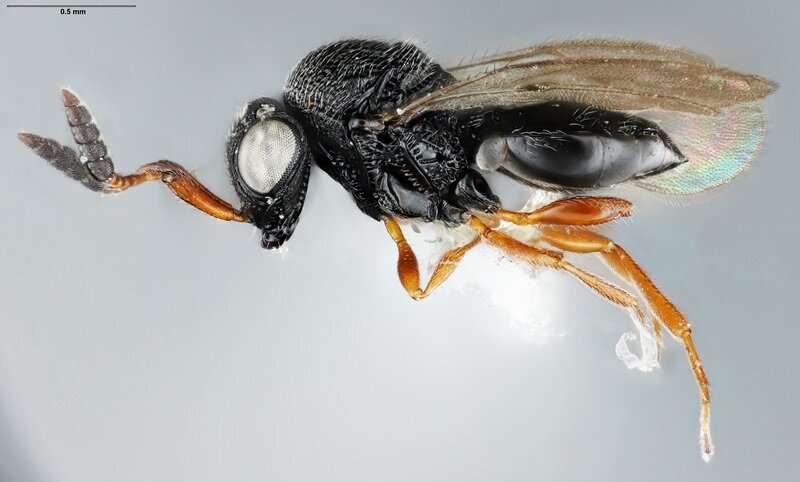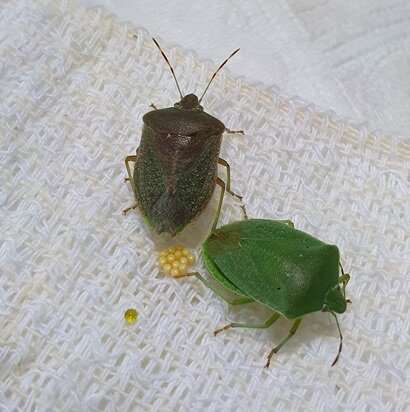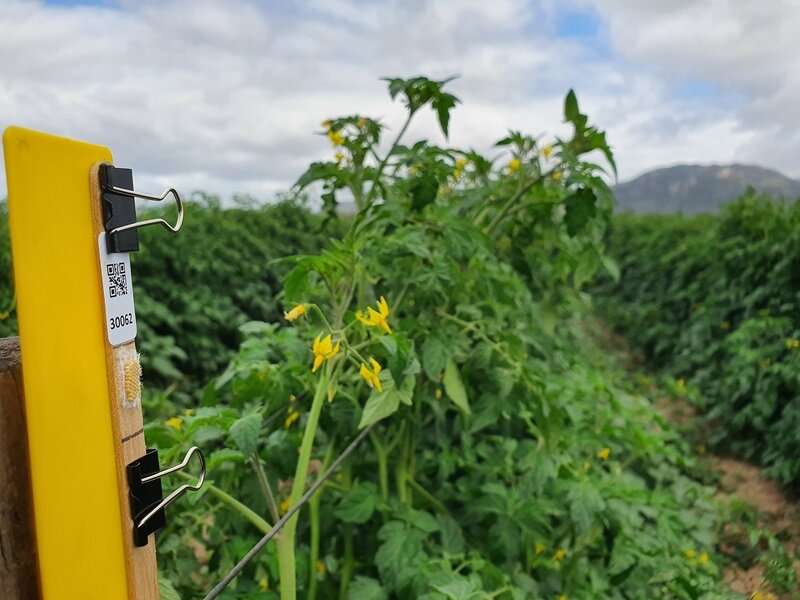This article has been reviewed according to Science X's editorial process and policies. Editors have highlighted the following attributes while ensuring the content's credibility:
fact-checked
trusted source
proofread
Searching for samurai wasps, one of the best preemptive biocontrol agents for destructive brown marmorated stink bugs

Ever get that feeling you've lost something really important? Is it in your other pocket? Or down the back of the couch? We can't find the samurai wasp, which we know was here before. It's important as a potential future biocontrol superhero against a serious agricultural insect pest threatening Australia.
Samurai were ancient Japanese warriors, often serving in private armies. We're hoping the namesake wasp could go into battle against one of world's worst biosecurity pests, if it ever establishes here: brown marmorated stink bug (BMSB).
BMSB is in the top 10 National Priority Plant Pests for Australia. If introduced here, it would cause serious damage to fruit and vegetable crops and ornamental plants. It's a voracious pest, which feeds on more than 300 plant species including key agricultural crops. And it can grow large populations and become a household nuisance as it seeks shelter indoors over winter.
The tiny samurai wasp, Trissolcus mitsukurii, is about the size of a sesame seed. It is one of the main egg parasitoids of BMSB in its native range in Japan. It can't sting humans. And it's so small it's easy to miss.
The samurai wasp was first recorded in Australia in 1914, but it was given a different name. It was also introduced in a biocontrol program in 1962 to help control the Green Vegetable Bug (GVB), Nezara viridula.
Subsequently, it was found in the ACT, NSW, Queensland, Victoria, Western Australia (WA) and South Australia. But it hasn't been recorded since 1998, when the last specimens were found in ACT and WA.
If the samurai wasp is still here, and can be found, then it could be a pre-emptive biocontrol agent ready to attack BMSB if it spreads here. A biological control program would involve breeding the wasp up in large numbers and releasing it to target BMSB wherever it is found in any future incursion.
But first we need to find out more about which hosts T. mitsukurii uses here. Australia has a high number of endemic stink bug species (94 genera and 330 species) so it probably uses some of these as hosts. This large number of native stink bug species would also make it tricky to import new host specific exotic biological control agents.
Our Australian National Insect Collection (ANIC) recently used our expertly identified stink bugs species from Australia and overseas to train artificial intelligence to distinguish BMSB from similar looking native species. The result is a smart phone app now being trialed at ports and airports by biosecurity officers.

Egg-cellent sentinel survey techniques
Our entomologist Dr. Valerie Caron and her team used egg sentinel surveys to hunt for the tiny samurai wasp at organic farms and gardens.
"Egg sentinel surveys are the most targeted technique to survey egg parasitoids such as this wasp," Valerie said.
"We established a laboratory colony of GVB to produce eggs to use in the survey. We placed these eggs at organic farms across Queensland, NSW, ACT, Victoria and South Australia during 2021 and 2022."
At each field site, the team deployed 10 egg rafts, either glued on a wooden stick or on a bandage and fastened to a marker. After a week, the team brought these back to the laboratory to monitor for parasitoid emergence.
Taxonomy tick off
The project team double-checked existing specimens previously found here to make sure they really were the samurai wasp Trissolcus mitsukurii.
World leading Trissolcus taxonomist Dr. Elijah Talamas reviewed previous taxonomic work and confirmed a match between previous specimens and T. mitsukurii from Asia.
The team also built Australia's first molecular library of all Trissolcus specimens from Australia and New Zealand.
Specialist staff from ANIC used next generation sequencing to extract degraded DNA from old specimens. This new library will allow easy identification of these species.

Tiny wasp, big future
Sadly we didn't find any T. mitsukurii samurai wasps using the egg sentinel survey. But we have improved our knowledge of the species in Australia using taxonomic methods and molecular sampling of old specimens.
The door remains open for future survey work, which could use broader techniques such as insect traps. These require less input at the field work stage, but more sorting of the samples, because they catch a broader range of insects.
One option would be insect traps with chemical lures (pheromone traps). These could be easily manufactured with 3D printers and used across a wider range.
Parasitoid distribution can be patchy and we're not exactly sure where the wasp is so a larger area survey could offer a greater chance of finding this elusive wasp.
On the plus side, the taxonomic and molecular genetic work has confirmed that this samurai wasp has been found previously in Australia, and overseas research shows its potential as a biological control agent for BMSB.
Provided by CSIRO





















